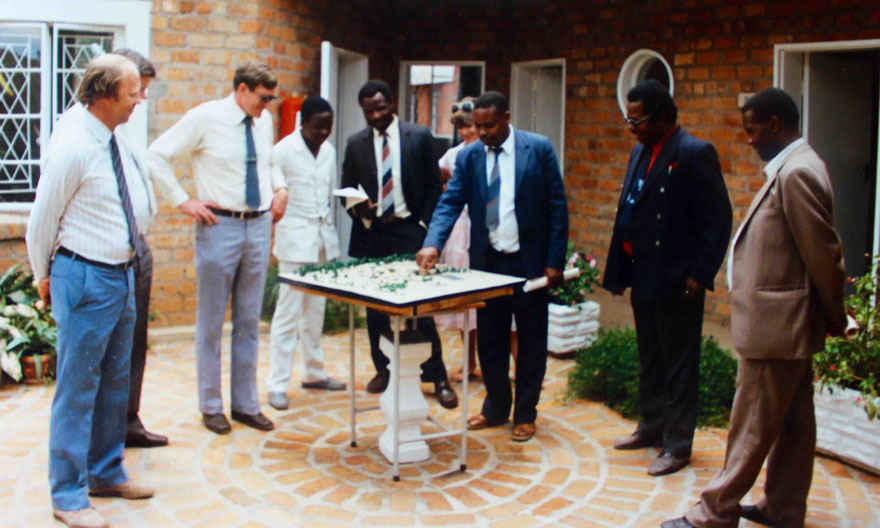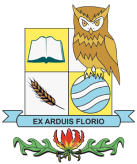History
- Watershed College was born like all other things, out of a dream. What made the Watershed dream a success, was the unwavering determination and single-mindedness of the founding parents. This is a quality which has transcended the years; from 1987, when the school opened its doors to the present day. Determination and hard work have become synonymous with Watershed College.
- The school opened its doors on Tuesday 26, January 1987, on the second Tuesday of the first term, to 89 students and 8 teachers.

- The second Tuesday of the first term has been appropriately named Founders’ Day, in proud but humble recognition of the founding parents’ efforts. No solid infrastructure was in place. That the dream came to fruition was largely due to the collective spirit of the parents. The pioneering students led a Spartan but exciting life and they took it in their stride, such was the desire to succeed. Boys were housed in tobacco barns belonging to some of the founding fathers, including Mr Robert Knott, who is currently the chairperson of the Board of Trustees.
- Watershed is built on the fine achievements of the past and the college owes its very rich tradition to the founding parents and students.
The Concept
- Watershed College was designed to provide students with the necessary education, to equip them for their future roles in the development of the nation. The aim of the College, is to combine the opportunities for high academic achievement with vocational expertise.
- Being a “farm school”, situated on 150 hectares of woodland and farm land, students will benefit from the tranquillity of their surroundings, in pursuing their academic studies, as well as having the opportunity to participate in the more practical subjects.
- The College is situated on Peddie Road, 12.5 kilometres from Marondera, just off the main Harare – Mutare road, approximately 61.5 kilometres from Harare.
- One of the aims of the College was to develop the land as a “working farm”, offering Agriculture as a subject to examination level. We can proudly say that to date, we have achieved this successfully. The farming operations assist in making the College self-sufficient in fresh produce. The surplus is sold and the proceeds used for further developments.
The Buildings
- The structural layout of Watershed College was designed to achieve harmony with nature. In order to blend with the environment and farm setting, the building materials selected were farm bricks. The buildings include: classroom blocks, dormitory styled hostels for boarders, kitchen and dining facilities, library, sickbay, chapel and administration offices.
- Recognising that our environment is a precious heritage, areas of natural vegetation, containing indigenous and exotic timber, are being preserved for purposes of conservation and research.
The Location
The land, site of the school, was donated by a local farmer Mr. George Van Niekerk, who owned and lived on Roraima Farm at the time. The arable land here had once been used to grow tobacco, so there were old tobacco lands of tall thatching grass between the anthills and natural vegetation on them. Mr. Van Niekerk believed strongly in the concept of Watershed College and gave the school the land for its location. In appreciation the Governors built two water troughs on the other side of the railway line for his cattle to drink there.
The school committee then set about increasing the size of the property by buying two neighbouring farms, - Peddie Farm where the Agriculture Diploma Course is located and Zvipadze Farm where the tobacco is cured. This was considered big enough for the school to be a successful farm, so that the pupils could learn farming as well as academic subjects.
The organizational structure of the College was based on The Constitution of Watershed College which was drawn up by Mr. Richard Mufuka, of Marondera, a lawyer, now also a Trustee. The system of development was based on communities and sub committees, groups of members, chaired by a member of the Board of Governors. These committees were responsible for design, building, finance, fund raising and every aspect of the school development, so the tasks were shared by everybody.
The COLOURS of the school – beige and sky blue reflect the colour of the sandveld soil and the clear blue, sky here at the school.
The NAME reflects the physical location – we are right on the top of the Watershed of Zimbabwe, the railway line follows this crest and generally the rainfall falling North of the railway line flows North and that falling south of the railway line flows South.
The Watershed is a dividing line and represents movement from it in different directions. The building of Watershed College was recognised as a forward moving development starting a new education system designed for Zimbabwe.
The Moto – EX ARDUIS FLORIO means “through much effort the flower blooms” Or “out of hard work success is achieved.”
It represents the thoughts and attitudes of the founders and their beliefs in what the school should mean to its pupils and the community.
The EMBLEM – an OWL represents the ethos of the school being one of wisdom, quiet determination and success. All the ideas brought to mind when thinking of an owl both scientifically and culturally.
The Conversation of the Environment – a sub-committee discussed and drew up a plan for the school environment and its conservation which is captured in the Garden Plan. Plants were chosen and layouts designed with the understanding that there was no large body of stored water on the property and although ground water was plentiful with the school being located over a well-known geological fault zone it was clearly understood that water conservation was essential. The gardens were designed as “waterwise”.
Trees have a very powerful effect on atmosphere. Tall trees convey a peaceful feeling, with tranquillity and calmness but at the same time adding strength and security. This is Watershed College, so the trees are very important especially the tall gum trees, with their height for eagles and owls to rest in and build their nests, representing the students reaching for the stars.
A small special area next to the library was set aside as the WITNESS AREA. This piece of original Miombo Woodland was selected to represent and bear witness to the type of vegetation which was here, where the school was built.
It acts as a benchmark or reference point to say -hey this is what it was like before anybody came here.
However, it also needs care and management to remove invader species like lantana and keep it clear of litter and pollution. If you go in there walk quietly, take only photographs and leave only foot prints. There are birds nesting there and animals and insects who call the place their home, respect it and respect them. ·
The buildings were originally designed by the Architect Mr. John Kirkman to blend into the location and be part of it. Consequently the buildings were integrated within the site and ant hills and outcrops of trees and indigenous vegetation were protected wherever possible.


.png)